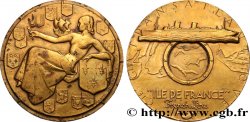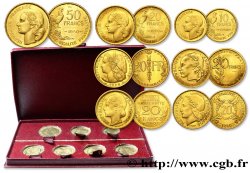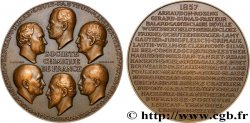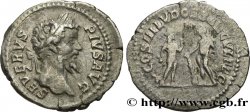v18_2352 - 50 centimes Morlon, variété de métal ou essai indéterminé 1947 F.192/19 var.
MONNAIES 18 (2003)
Начальная цена : 180.00 €
Назначить цену : 400.00 €
Цена реализации : 415.00 €
Количество ставок : 7
Максимальная предлагаемая цена : 451.00 €
Начальная цена : 180.00 €
Назначить цену : 400.00 €
Цена реализации : 415.00 €
Количество ставок : 7
Максимальная предлагаемая цена : 451.00 €
Тип 50 centimes Morlon, variété de métal ou essai indéterminé
Дата: 1947
Металл: nickel silver
Диаметр: 18 mm
Ориентация осей монеты: 6 h.
Вес: 2,47 g.
Век: lisse
Редкость: R3
Комментарии о состоянии
Exemplaire brossé de façon agressive, la surface d’origine n’est plus distincte
Ссылки в каталоге: :
Лицевая сторона
Аверс: легенда: REPVBLIQVE - FRANÇAISE.
Аверс: описание: Buste de la République à gauche, coiffée du bonnet phrygien orné d’une cocarde sous couronne composite d’olivier, de chêne et de blé ; signé MORLON derrière.
Обратная сторона
Реверс: легенда: LIBERTE - EGALITE / FRATERNITE.
Реверс: Описание: 50 / CENTIMES / 1947 entre deux cornes d’abondance.
Комментарий
Cet exemplaire est apparemment frappé avec des coins d’origine, les différents sont bien nets et le poids, nettement au-dessus du poids d’un exemplaire en cupro-nickel (2,47 au lieu de 2,00 g) montrent qu’il ne s’agit pas d’un vulgaire placage. S’agit-il d’une frappe d’essai ou d’une fabrication non-officielle réalisée par un ouvrier “indélicat”, une “perruque” ? Aucun autre exemplaire ne semble en tous cas signalé avec des caractéristiques identiques. La pièce réagit à l’aimant et montre ainsi qu’elle possède au moins une partie importante de nickel.
This example is apparently struck with original dies, the differences are very clear and the weight, clearly above the weight of a cupro-nickel example (2.47 instead of 2.00 g) shows that it is not a common plating. Is it a test strike or an unofficial production carried out by an “unscrupulous” worker, a “wig”? In any case, no other example seems to be reported with identical characteristics. The coin reacts to the magnet and thus shows that it has at least a significant part of nickel
This example is apparently struck with original dies, the differences are very clear and the weight, clearly above the weight of a cupro-nickel example (2.47 instead of 2.00 g) shows that it is not a common plating. Is it a test strike or an unofficial production carried out by an “unscrupulous” worker, a “wig”? In any case, no other example seems to be reported with identical characteristics. The coin reacts to the magnet and thus shows that it has at least a significant part of nickel







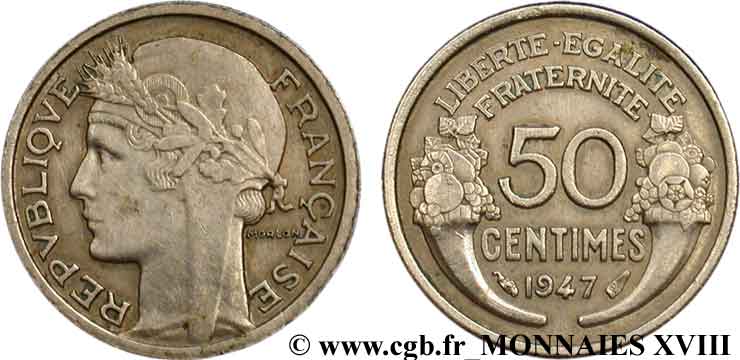
 Cообщить об ошибке
Cообщить об ошибке Распечатать страницу
Распечатать страницу Отправить мой выбор
Отправить мой выбор Задать вопрос
Задать вопрос Consign / sell
Consign / sell
 Информация
Информация
